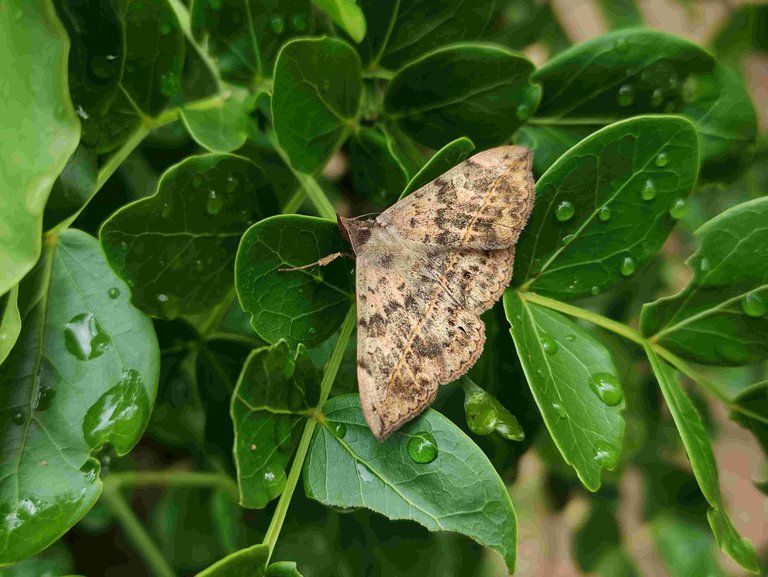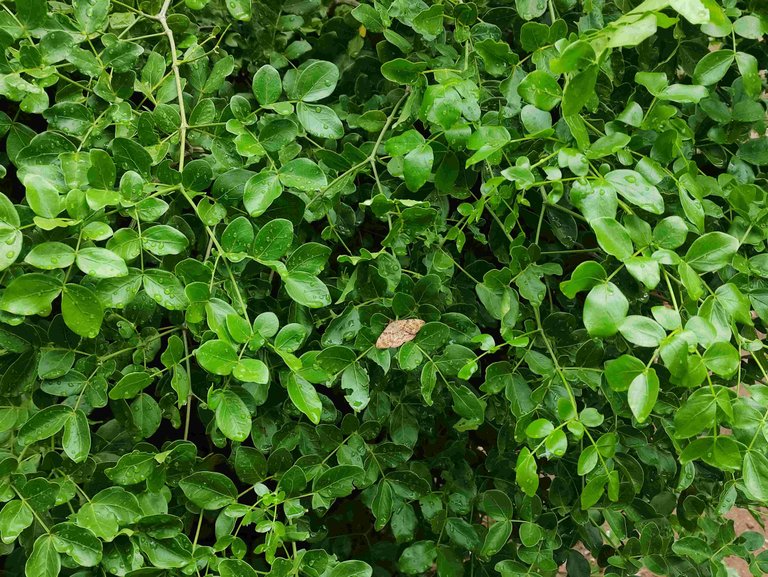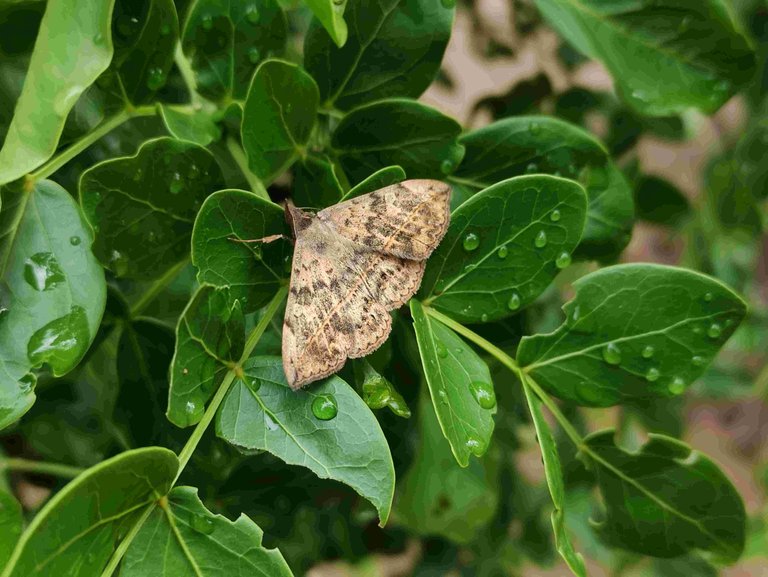Anticarsia gemmatalis: An interesting moth (ENG - SPN)

Buenos días, tardes o noches. Para hoy les traigo una bonita polilla, ya en estado adulto, que según pude investigar con Google Lens, se llama Anticarsia gemmatalis, también conocida, como Oruga de las leguminosas, que es un insecto nativo de las zonas tropicales de América.

Para ser franca, a esta polilla la he visto antes tanto en mi jardín interno como en mi solar. También he visto otras similares, pero días atrás, cuando tomé esta foto, recién había dejado de llover y este hermoso ejemplar resaltaba sobre el verde de uno de los arbolitos de guayacán (Guaiacum officinale). Me pareció tan bonito este contraste, que decidí fotografiarla.



Estuve investigando acerca de este insecto, y tiene un ciclo de vida de 47 días, el cual puede verse disminuido por la humedad y por el calor, condiciones ambientales que están presentes actualmente en la zona en donde vivo. Se considera que es una plaga para la soja, algodón, alfalfa y otros cultivos. También encontré que es una plaga nocturna, (aunque yo la fotografié de día, tomando el sol). Me sorprendió lo prolífica que puede ser, ya que pueden poner en 600 y 1200 huevos, (con razón se considera una plaga).


Según la bibliografía que consulté (pueden ver el enlace en la zona de referencias bibliográficas de este post), este individuo adulto puede vivir entre 10 y 15 días. También indica que su coloración puede variar de parda, como es este ejemplar, pero también hay individuos de color grisáceo, amarillento, morados o con manchas negras.


El apetito de esta polilla puede ser voraz, quizás ella sea la responsable de que mis plantas de pimiento no tengan hojas, aunque no estoy 100% segura, pues no he visto las orugas, sólo los individuos adultos. En todo caso, es un bonito insecto que merece ser conocido.

Aquí termino mi post de hoy, en el que les he compartido las imágenes de un bonito insecto, que puede convertirse en una plaga. Me despido de ustedes, deseándoles mucha salud y bienestar y recuerden: No todos los días son iguales y más importante aún: Todo lo que das, todo lo que haces, inexorablemente volverá a ti. ¡Abrazos!



Todo el contenido, (excepto los separadores de texto) es de mi propiedad y está sujeto a derechos de autor // All content (except text dividers) is my property and is subject to copyright.




Delegations welcome!

Hola, es posible que sea así como piensas, en mi jadín he tenido pollillas, pero hay que mirar bien porque las orugas son tan pequeñas que casi ni se ven. Observa bien a ver si ves agunas oruguitas por allí, comen bastante. Saludos.
Hola @hylene74
Sí, creo que son esas orugas. Realmente no he detallado, incluso, en el árbol en donde tomé estas fotos, es posible ver algunas hojas comidas, masticadas. Voy a revisar el envés de las hojas, a ver si están ocultas las orugas allí. Pensé que eran más grandes, pero sí, deben ser muy pequeñas, tal como dices.
Gracias por tu visita, que tengas un estupendo día.
super interesante tu post!!! un saludo desde Argentina.
Gracias @cocinator
https://www.reddit.com/r/Insect/comments/1ma4pct/anticarsia_gemmatalis/
This post has been shared on Reddit by @sirenahippie through the HivePosh initiative.